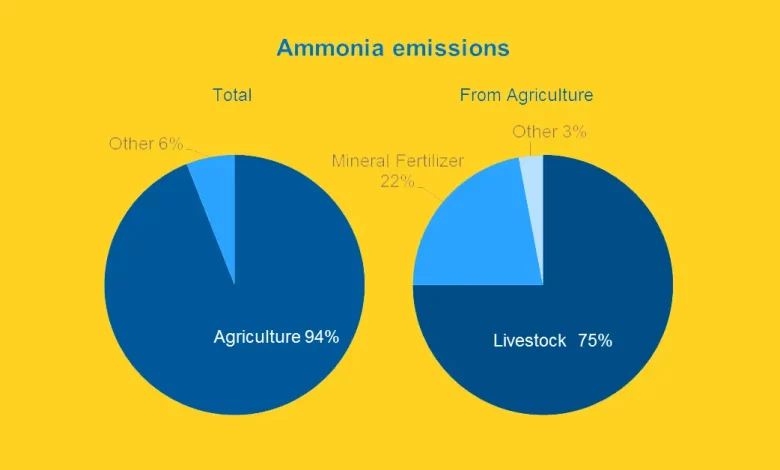Daily Current Affairs for UPSC
Managing fertiliser usage to decrease emissions of ammonia
Syllabus: Environment and Pollution [GS Paper-3]

Context: Researchers have used machine learning to accurately determine the amount of ammonia emissions from rice, wheat, and maize crops.
Key points:
- A research focusing on croplands has revealed that proper application of fertilisers in cultivating rice, wheat and maize would cut on atmospheric ammonia emissions due to farming to as low as 38%.
- Under this technique, traditional tillage methods are used to put the enhanced-efficiency fertilisers deeper into the soil during the growing season.
- The researchers estimated that rice crops could provide 47% of the total reduction, while maize and wheat could provide 27% and 26% respectively.
- Absent management strategies, ammonia emissions could rise between 4.6% and 15.8% by 2100, contingent on greenhouse gas emissions.
Approach used in the research:
- Some scientists from the Southern University of Science and Technology in Shenzhen, China, as well as other partners, have used machine learning to develop a model that estimates ammonia production by rice, wheat, and maize farming around the world.
- The model includes a number of factors that include climate conditions, crop varieties, soil properties, irrigation methods, tillage practices, and fertilisation practices.
- In order to establish a model, the researchers gathered a large dataset of ammonia emissions from more than 2,700 observations, which were collected through a critical review of published literature.
- Using this model, the researchers could calculate that the global emission in ammonia in 2018 was approximately 4.3 teragrams, which is 4.3 billion kilograms.
Various reasons for reduced
ammonia emissions:
- Atmospheric ammonia is a key An environmental pollutant that has wide-ranging effects on ecosystems worldwide and poses a threat to human health is ammonia.
- Anthropogenic sources, particularly crop cultivation, are responsible for around 51-60% of ammonia emissions.
- Notably, three major staple crops, namely rice, wheat, and maize, contribute to about 25-30% of these emissions.
- Ammonia, also known as NH3, plays a significant role in various environmental issues such as acidification and eutrophication.
- Additionally, it acts as a precursor to secondary particulate matter, which further exacerbates health problems.
- Secondary particulate matter is formed through intricate chemical reactions in the atmosphere. Recent research has highlighted a concerning trend of increasing global NH3 emissions over the past few decades. This rise in emissions has significant negative implications for environmental and public health, as well as efforts to combat climate change.
Details about Ammonia (NH3):
- NH3 is a gaseous ammonia that is a highly alkaline gas and is present in large concentrations in Earth’s atmosphere.
- It has an important function as one of the main constituents of reactive nitrogen.
- The main source of NH3 emissions is agriculture, such as animal husbandry and the use of NH3-based fertilisers.
- Nevertheless, NH3 is also released from industrial processes, automobiles and through the volatilization of soils and oceans.
- Interestingly, ammonia is present not only in artificial sources but also in nature.
- It is synthesised in the human body and is required for protein synthesis and other complex molecules.
- Ammonia is produced naturally in the soil through bacterial processes.
- Besides, when plants, animals and animal waste decompose, they also release ammonia as a by-product.
Properties:
- Ammonia is a gas that is colourless and has a strong, suffocating smell.
- It can dissolve in water to create a solution called ammonium hydroxide, which can cause irritation and burns.
- Ammonia is easily compressed and can become a liquid under pressure. It is typically transported in steel cylinders.
- While ammonia is not highly flammable, containers of ammonia can explode if exposed to high temperatures.
Uses:
- Approximately 80% of the ammonia produced in industry is utilised as fertiliser in agriculture.
- Additionally, ammonia is employed as a refrigerant gas, for water purification, and in the production of various products such as plastics, explosives, fabrics, pesticides, dyes, and other chemicals.
- It is also present in numerous household and industrial cleaning solutions.
Conclusion:
This study highlighted the importance of addressing ammonia emissions from growing rice, wheat, and maize in order to protect the environment and human health. It also provided a solution to reduce the negative impact on ecosystems.
Source: The hindu





.png)



